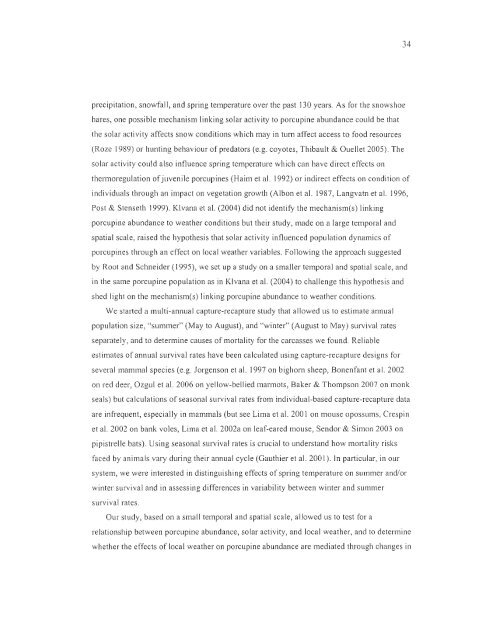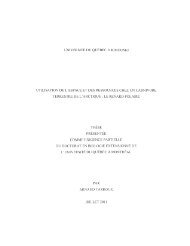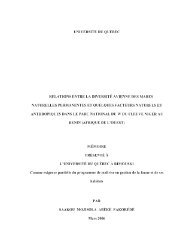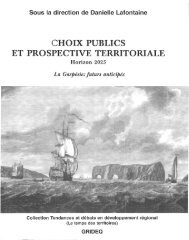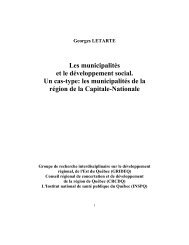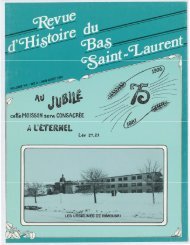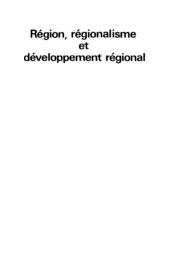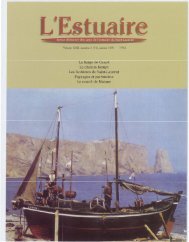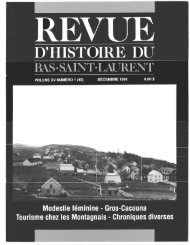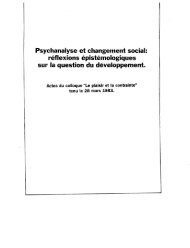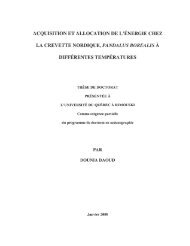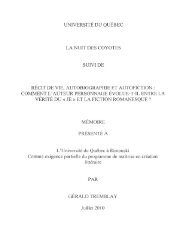influence du climat et de la prédation sur l'utilisation de l'habitat et la ...
influence du climat et de la prédation sur l'utilisation de l'habitat et la ...
influence du climat et de la prédation sur l'utilisation de l'habitat et la ...
Create successful ePaper yourself
Turn your PDF publications into a flip-book with our unique Google optimized e-Paper software.
34<br />
precipitation, snowfall, and spring temperature over the past 130 years. As for the snowshoe<br />
hares, one possible mechanism linking so<strong>la</strong>r activity to porcupine abundance could be that<br />
the so<strong>la</strong>r activity affects snow conditions which may in turn affect access to food resources<br />
(Roze 1989) or hunting behaviour of predators (e.g. coyotes, Thibault & Ouell<strong>et</strong> 2005). The<br />
so<strong>la</strong>r activity could also <strong>influence</strong> spring tempe rature which can have direct effects on<br />
thermoregu<strong>la</strong>tion of juvenile porcupines (Haim <strong>et</strong> al. 1992) or indirect effects on condition of<br />
indivi<strong>du</strong>als through an impact on veg<strong>et</strong>ation growth (Albon <strong>et</strong> al. 1987, Langvatn <strong>et</strong> al. 1996,<br />
Post & Stens<strong>et</strong>h 1999). Klvana <strong>et</strong> al. (2004) did not i<strong>de</strong>ntify the mechanism(s) linking<br />
porcupine abundance to weather conditions but their study, ma<strong>de</strong> on a <strong>la</strong>rge temporal and<br />
spatial scale, raised the hypothesis that so<strong>la</strong>r activity <strong>influence</strong>d popu<strong>la</strong>tion dynamics of<br />
porcupines through an effect on local weather variables. Following the approach suggested<br />
by Root and Schnei<strong>de</strong>r (1995), we s<strong>et</strong> up a study on a smaller temporal and spatial scale, and<br />
in the same porcupine popu<strong>la</strong>tion as in Klvana <strong>et</strong> al. (2004) to challenge this hypothesis and<br />
shed light on the mechanism(s) lin king porcupine abundance to weather conditions.<br />
We stm1ed a multi-annual capture-recapture study that allowed us to estimate annual<br />
popu<strong>la</strong>tion size, "summer" (May to August), and "winter" (August to May) <strong>sur</strong>vival rates<br />
separately, and to d<strong>et</strong>ermine causes of mortality for the carcasses we found. Reliable<br />
estimates of annual <strong>sur</strong>vival rates have been calcu<strong>la</strong>ted using capture-recapture <strong>de</strong>signs for<br />
several mammal species (e.g. Jorgenson <strong>et</strong> al. 1997 on bighorn sheep, Bonenfant <strong>et</strong> al. 2002<br />
on red <strong>de</strong>er, Ozgul <strong>et</strong> al. 2006 on yellow-bellied marmots, Baker & Thompson 2007 on monk<br />
seals) but calcu<strong>la</strong>tions of seasonal <strong>sur</strong>vival rates from indivi<strong>du</strong>al-based capture-recapture data<br />
are infrequent, especially in mammals (but see Lima <strong>et</strong> al. 2001 on mouse opossums, Crespin<br />
<strong>et</strong> al. 2002 on bank voles, Lima <strong>et</strong> al. 2002a on leaf-eared mouse, Sendor & Simon 2003 on<br />
pipistrelle bats). Using seasonal <strong>sur</strong>vival rates is crucial to un<strong>de</strong>rstand how mortality risks<br />
faced by animais vary <strong>du</strong>ring their annual cycle (Gauthier <strong>et</strong> al. 2001). ln pm1icu<strong>la</strong>r, in our<br />
system, we were interested in distinguishing effects of spring temperature on summer and/or<br />
winter <strong>sur</strong>vival and in assessing differences in variability b<strong>et</strong>ween winter and summer<br />
<strong>sur</strong>vival rates.<br />
Our study, based on a small temporal and spatial scale, allowed us to test for a<br />
re<strong>la</strong>tionship b<strong>et</strong>ween porcupine abundance, so<strong>la</strong>r activity, and local weather, and to d<strong>et</strong>ermine<br />
wh<strong>et</strong>her the effects of local weather on porcupine abundance are mediated tlu'ough changes in


